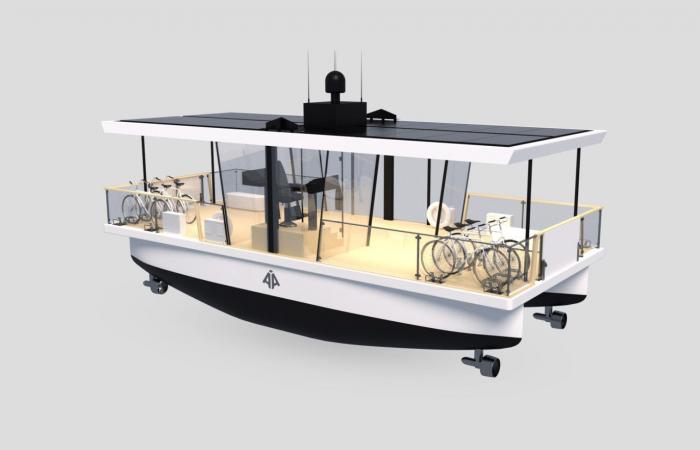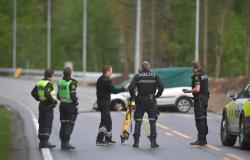The future is not only emission-free – it is also driverless. And yes, that includes the wet element, and Norway is the world leader in that.
Norway has long been a leading maritime nation, and in recent years we have also led the way when it comes to developing and testing new technology in the transport sector.
– Advertisement –
We already have things like self-driving buses and self-driving plows here in Norway, and as recently as September large parts of the car industry gathered on Andøya to carry out jam tests.
Jamming is a phenomenon that blocks radio and GPS signals, and is a major challenge for self-driving vehicles that depend on such signals to be able to steer by themselves.
The industry is therefore taking this into account, and tests were carried out on Andøya with over 100 participants from all over Europe in place. This important test was carried out by Nkom, the Swedish Road Administration, the Norwegian Defense Research Institute (FFI) and the Swedish Regulatory Agency, and takes the automotive world one step closer to the dream of self-driving cars.
When it comes to the wet element, Norway is also leading the way, and already in 2016 a Norwegian forum for autonomous ships was established to pave the way for self-sailing ships.
– Advertisement –
Last summer, the Norwegian Maritime Directorate and the Coastal Administration also opened a new national test area for so-called autonomous vessels at Haugalandet, which connects all the important areas for tomorrow’s ships, such as digitalisation, automation and the development of new energy solutions.
Autonomous boats are thus nothing new, and the first autonomous ferry trip was carried out in Finland already in 2018 under the auspices of Rolls-Royce and the state-owned Finnish ferry company Finferries.
Here at home, among other things, Asko has just christened its first two self-sailing vessels that will operate between Moss and Horten. The godmothers of the two are Marit Bjørgen and Therese Johaug themselves, and Asko calls these vessels battery-electric sea drones.
The two, i.e. the ships and not the former cross-country stars, are to form part of an all-electric transport chain to ensure efficient and emission-free transport of groceries, and according to Asko replaces 1 million road kilometers of truck transport a year and contributes to 5,000 tonnes less CO2 emissions a year.
– Advertisement –
Over in Western Norway, they are also working on a “world’s first”, which is Asko’s electric sea drones. The Aa brothers are from Sogn og Fjordane, and they are experts in the construction and building of high-speed boats in carbon fibre.
Together with the ferry company Torghatten and Zeabuz, the latter experts in autonomous systems for passenger vessels with headquarters in Trondheim, the trio will provide a never-before-seen small great revolution in Stockholm.
They will build the world’s first self-driving city ferry, and this is what it looks like:
– Norway is at the forefront of the world in autonomous vessels, and we have come a long way in the development of cargo ships, says Reidun Svarva, head of business development in Torghatten.
‒ Now we are taking this to the next level with testing and development of commercial, driverless passenger ferries. We are proud of this project where both the shipping company, technology supplier and shipyard become Norwegian exports to Stockholm.
The shipyard will build an electric catamaran that takes 25 people, and if all goes according to plan, the ferry should be completed already in April.
Torghatten explains that the boat will operate the stretch between Kungsholmen and Søder Mellarstrand in Stockholm, and will be in electric operation for a full 15 hours every single day. The boat has a crew of one person in addition to a control room on land.
‒ At first, the boat will always be guided by a crew consisting of a captain, while the trip will be monitored from a control room. In the long term, the intention is that everything will be controlled from the control room, says Svarva.
It is the Brødrene Aa that will build the 12 meter long ferry, and they know what it is all about. The shipyard here has existed since 1947.
– This is a very exciting project for us where we combine the technological expertise and experience we have with building energy-efficient speedboats, and get to combine that with the autonomous technical solutions of the future, says Tor Øyvin Aa, general manager of Brødrene Aa.
– We see great future possibilities for this type of vessel, at a time when more and more cities are looking at better utilization of the waterways as a means of transport. The agreement has great strategic value for us as we, together with Torghatten and Zeabuz, are demonstrating ground-breaking technology.
Zeabuz, which does sound very international, has spun out of a maritime research environment at the Norwegian University of Science and Technology (NTNU), and together the two have already developed an autonomous test ferry that runs in Trondheim.
The project in Stockholm stands out in that it is the world’s first autonomous ferry with commercial operation.
– We have learned a lot from our project in Trondheim, and now we are ready to take the next step in creating the world’s first commercial autonomous city ferry, says Erik Dyrkoren, CEO of Zeabuz.
‒ The technology will largely be the same, but in Stockholm we will seriously test the autonomy system in daily operation with passengers in a way that no one has done before. This will be incredibly exciting, he asserts.
That’s not all that happens in Stockholm.
For the Swedish electric boat brand Candela will also build an all-electric shuttle ferry with a hydrofoil solution that makes it fly over the water, and this will cut the commuting time between Ekerö and central Stockholm from 55 minutes down to 25 minutes. And this only with electric power.
But the autonomous Norwegian ferry is perhaps attracting even more international attention, and there are two reasons for that.
Torghatten says that 90 percent of all urban areas are located by waterways, and a self-sailing ferry will both save the environment from emissions and cut high operating costs, which is the reason why the waterways are largely unused.
‒ With autonomy, we can get operating costs low enough to make the ferry commercially profitable, and we can offer a departure frequency that is adapted to market needs. It means a green transport revolution at sea, and Stockholm is the first place in the world where this is now being tested, says Reidun Svarva in Torghatten.
Also read:






